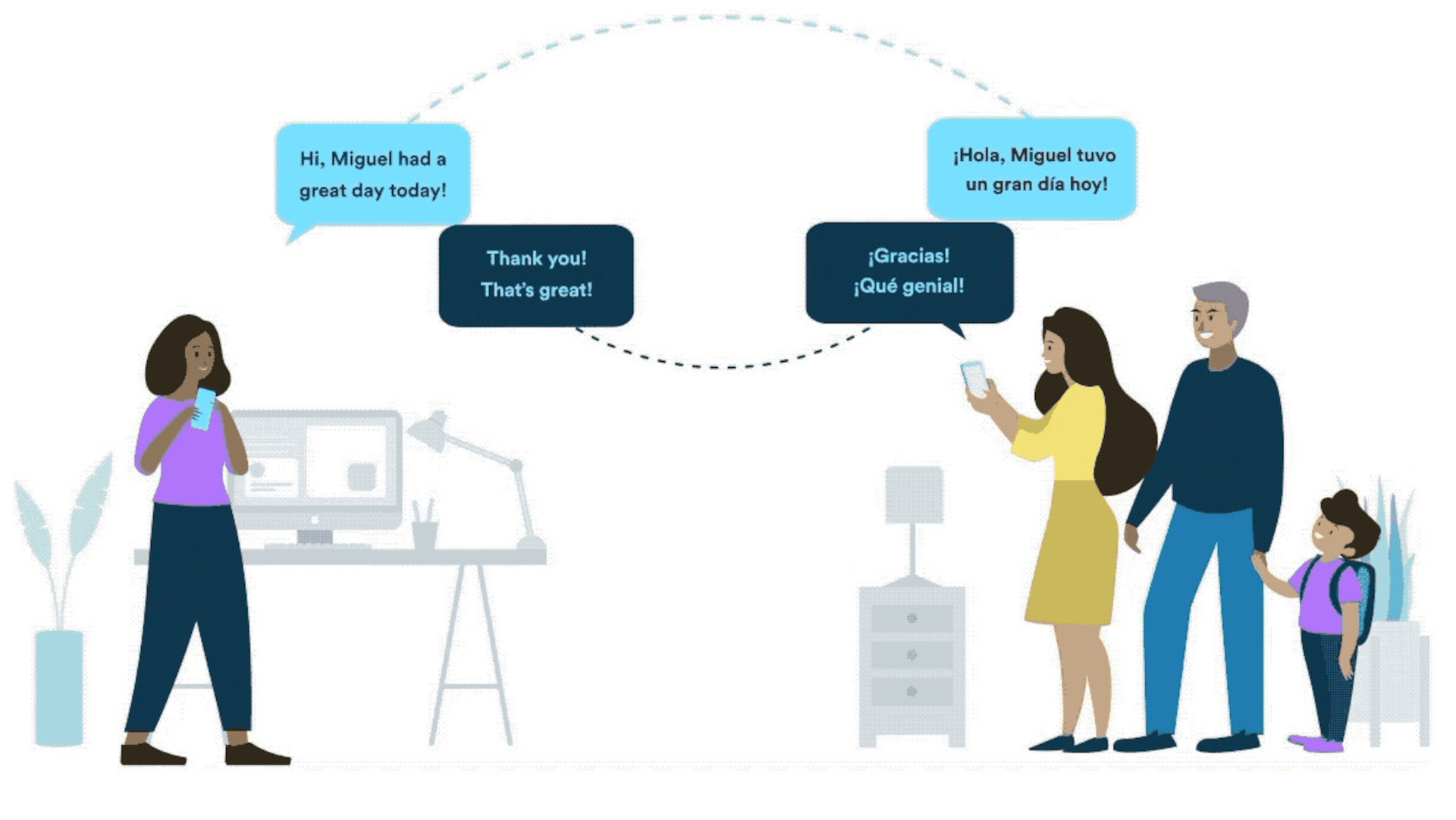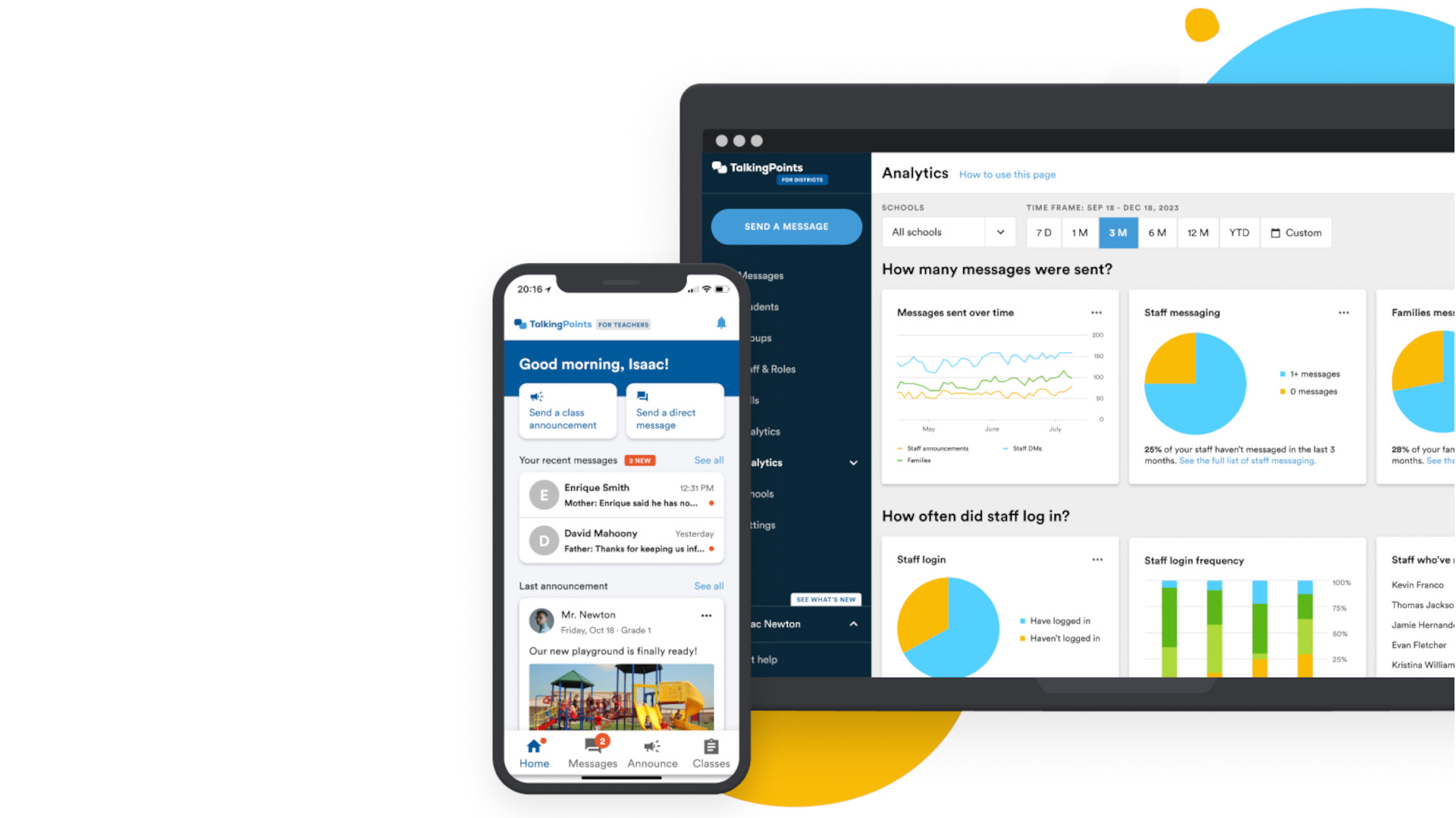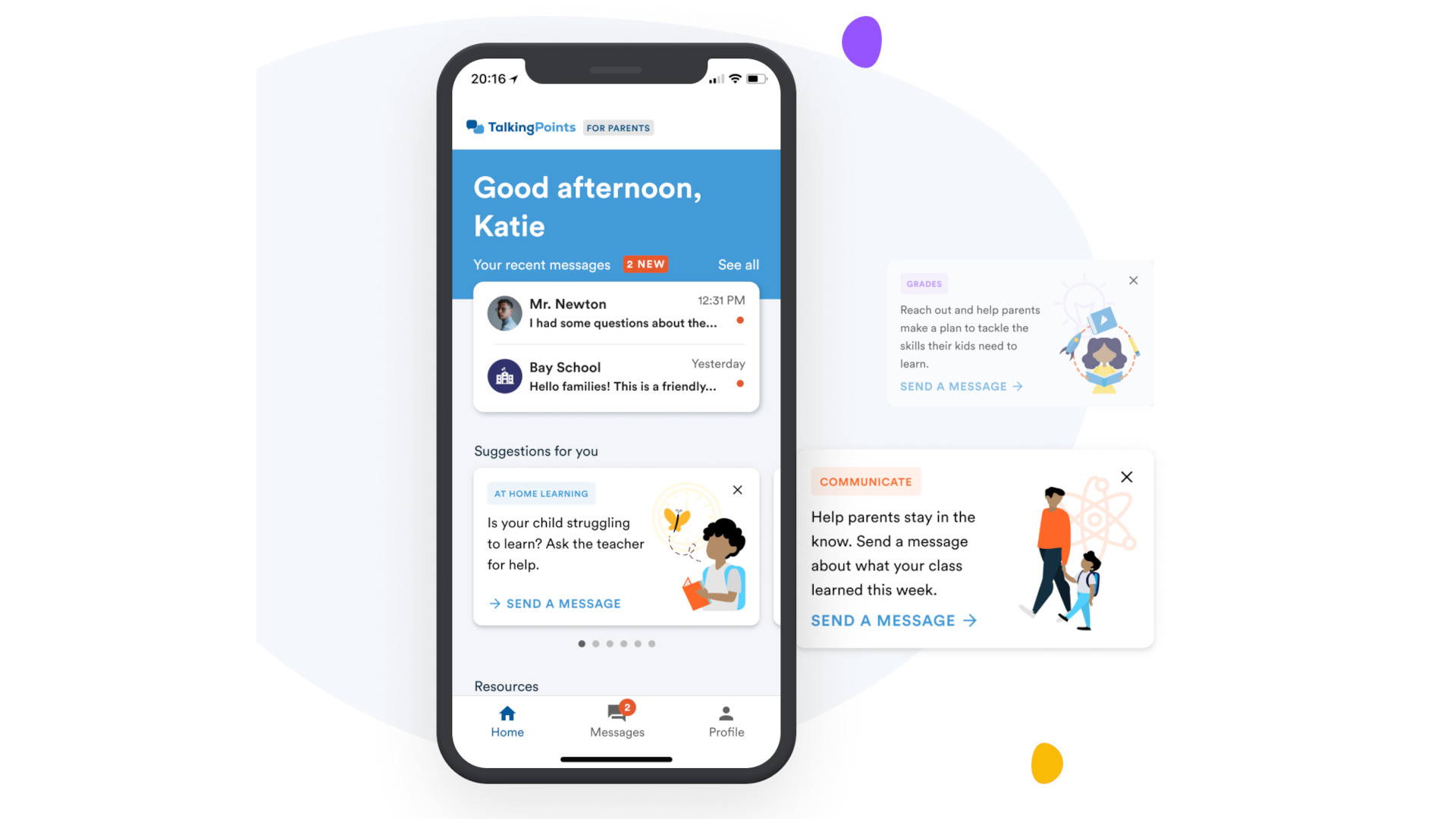TalkingPoints: How to Use It to Connect With Families
TalkingPoints is a family engagement platform designed for school and district use

TalkingPoints is a communication tool that works between school and home. More than that, this is also a multi-lingual translation tool making that communication, across languages, far easier.
The company behind this app has shown research that suggests its use has decreased absenteeism rates by 24% in Tulsa Public Schools. And that's just one positive outcome from its many uses.
The system also was shown to improve math test scores as well as overall academics, with outsized results for underserved students in particular.
This guide aims to explain all you need to know about TalkingPoints to see if it could work in your place of study.
What is TalkingPoints?
TalkingPoints is an app-based system for facilitating communication between schools and homes. This works teacher-to-parent but also scales to district-wide uptake that's well-supported, making it easy to use.
Currently in use by two in three U.S. schools and one in two districts, it's a well-proven success and reaches over five million families and educators across the states.
The tool is focused on family engagement with an AI-assisted translation service that helps make that possible across language barriers.
Tools and ideas to transform education. Sign up below.
The provider focuses on data security and safety to ensure it can be used without concern by both parents and teachers alike. It is FERPA-, CSPC-, and AICPA-certified, making it federal and state standards compliant.

How does TalkingPoints work?
TalkingPoints can be setup at teacher, school, or district levels with plenty of controls. Ultimately, it gets teachers and parents or guardians connected on the app. Once this is done, the platform can then be used to communicate directly, within the app.
Thanks to push notifications, this appears like any other messaging app, allowing for near live communication between schools and homes.
Teachers are able to send messages in their native tongue and it will appear on the devices of parents in the language they have set as theirs. So a teacher could send a message in English and it would appear in Spanish, for example. The parent replies in Spanish and the teacher gets it appearing in English. A seamless back and forth that's helped by AI-assisted translation smarts.

What are the best TalkingPoints features?
TalkingPoints offers a really powerful translation feature, which means communications are accurate across any language barriers. The platform translates a massive 150 languages.
While most translations use machine translation, with human support there too, there are a few more niche languages that still use human-translated templates. A school-focused glossary ensures educational context words are used to avoid confusion and make the most sense.
The ease of use makes this a really appealing option as it is just like sending a text message. It's not only easy to have teachers up and running right away, but also for all parents and guardians to engage with the app with very little assistance needed. And with tutorial videos on the company website, uptake can be a simple process, too.
Translation goes beyond messages alone as teachers can now upload videos and parents can select the "help me understand" option to get captions in their own language overlaid.

How much does TalkingPoints cost?
TalkingPoints works on a priced system that must be paid for to have access to the app. These are charged on a school or district level with bespoke pricing that varies to suit the scale of the needs. For this reason, investing at a district scale may work out as a more economically viable option.
TalkingPoints best tips and tricks
Practice in school
Use the app in school between teachers to practice, initially, so as to work out any kinks before it's rolled out to families.
Encourage follow-up
If there is any confusion it's important to encourage a face-to-face meeting, with human translation, so as to avoid any miscommunication digitally.
Broadcast out
Use groups and classes to broadcast messages that reach many families to save teacher time while keeping families in the loop.
Luke Edwards is a freelance writer and editor with more than two decades of experience covering tech, science, and health. He writes for many publications covering health tech, software and apps, digital teaching tools, VPNs, TV, audio, smart home, antivirus, broadband, smartphones, cars and much more.

